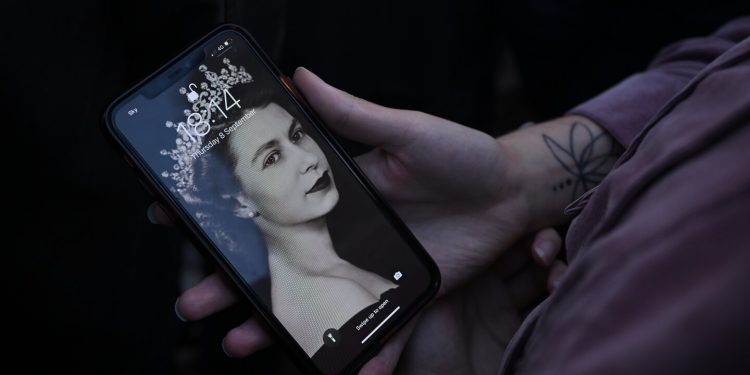The first murmurs that the queen might have died came just after midday in parliament.
It was Liz Truss’ second day as British prime minister. Early Thursday afternoon, the new leader of Britain was facing a grilling from the leader of the opposition, Keir Starmer, about her plans for the country’s winter energy crisis. Starmer’s deputy passed him a note written on yellow paper. Within minutes, both Truss and Starmer had left the room. There was hushed talk. Something was up.
“A lot of very glum faces,” one reporter noted on Twitter.
It was 12.21 p.m. in London.
Queen Elizabeth II had been the British monarch since 1953. She had seen Britain through turbulent years, offering a type of symbolic leadership that provided many with stability and comfort. But she was also 96 years old. In recent years, her public appearances had become fewer and fewer. Her husband of 73 years, Prince Philip, died in 2021. He was 99.
For years, there have been accounts of secret plans prepared by the royal family, the British government and the publicly funded broadcaster, the BBC, for how to announce the queen’s death to the people. Leaks had described strict formal procedures under the name “Operation London Bridge,” with the BBC holding dress rehearsals for deaths every six months.
But the last time a sitting British monarch died was 70 years ago. A lot has changed since then.
Hours before the queen’s death was officially announced, there were fake accounts sharing fabricated news of the death. A BBC anchor shared news of the queen’s death, before deleting the tweet and issuing a strangely worded correction.
According to documents published last year by Politico, the day of the queen’s death would be described as “D-Day.” The scenes in Parliament on Thursday suggested that D-Day was here, though there were certainly other possibilities. It took less than 15 minutes for doubts to be dispelled.
At 12:34 p.m. London time, the Twitter account of Britain’s royal family shared a statement from Buckingham Palace. It was 29 words long: “Following further evaluation this morning, The Queen’s doctors are concerned for Her Majesty’s health and have recommended she remain under medical supervision.”
“The Queen remains comfortable and at Balmoral,” the statement continued, referring to the monarch’s summer home in Scotland.
Speculation abounded. The BBC website started a live blog; other outlets soon followed. A 2017 story published by the Guardian that described “Operation London Bridge” was widely shared on Twitter. The lengthy article discussed many of the arcane measures the BBC would take for the death, but also the psychological weight the queen’s death carries.
“The Queen is Britain’s last living link with our former greatness – the nation’s id, its problematic self-regard – which is still defined by our victory in the second world war,” the British author, Sam Knight, wrote.
By 1:48 p.m. London time, the BBC had suspended its regular programming. Huw Edwards, a veteran Welsh broadcaster, was on the screen wearing a somber black suit and a black tie. The chyron read simply: “HM Queen Elizabeth’s health.”
The royal family rushed to be at her side. Flight tracker websites tracked unusual flights to Aberdeen, the nearest airport to Balmoral, from Royal Air Force bases in other parts of Britain.
On Twitter, fake accounts saying the queen was dead were retweeted by many others. This has happened before. In 2016 a fake BBC news account spread the soon viral news that the queen had died before being suspended by Twitter. The year before that, a real BBC journalist sent out a tweet that read “Queen Elizabrth [sic] has died.” The tweet was quickly deleted; the BBC issued a statement that suggested the tweet had been sent during a “technical rehearsal for an obituary.”
This time, it didn’t seem like a rehearsal.
At 3:07 p.m. London time, BBC anchor Yalda Hakim tweeted “BREAKING: Queen Elizabeth has died aged 96, Buckingham Palace has announced.”
The tweet was swiftly deleted and then replaced with a correction. “I tweeted that there had been an announcement about the death of the Queen. This was incorrect, there has been no announcement, and so I have deleted the tweet,” Hakim wrote at 3.19 p.m.
In the hours that passed, more and more members of the royal family arrived at Balmoral. Prince William, the queen’s grandson, was photographed driving a Range Rover containing her sons Prince Andrew and Prince Edward and Edward’s wife Sophie.
In the past, some accounts of “Operation London Bridge” had suggested that the news would not be announced later in the evening, leading some reporters to suggest that no announcement would come before the morning. But times change.
At 6:41 p.m. local time, over six hours since the murmurs started, the Twitter account of the royal family made the announcement: “The Queen died peacefully at Balmoral this afternoon.” The website of the royal family went black, with a simple stark picture of the queen and the message: “Queen Elizabeth II 1926 — 2022.”
Source by www.washingtonpost.com

